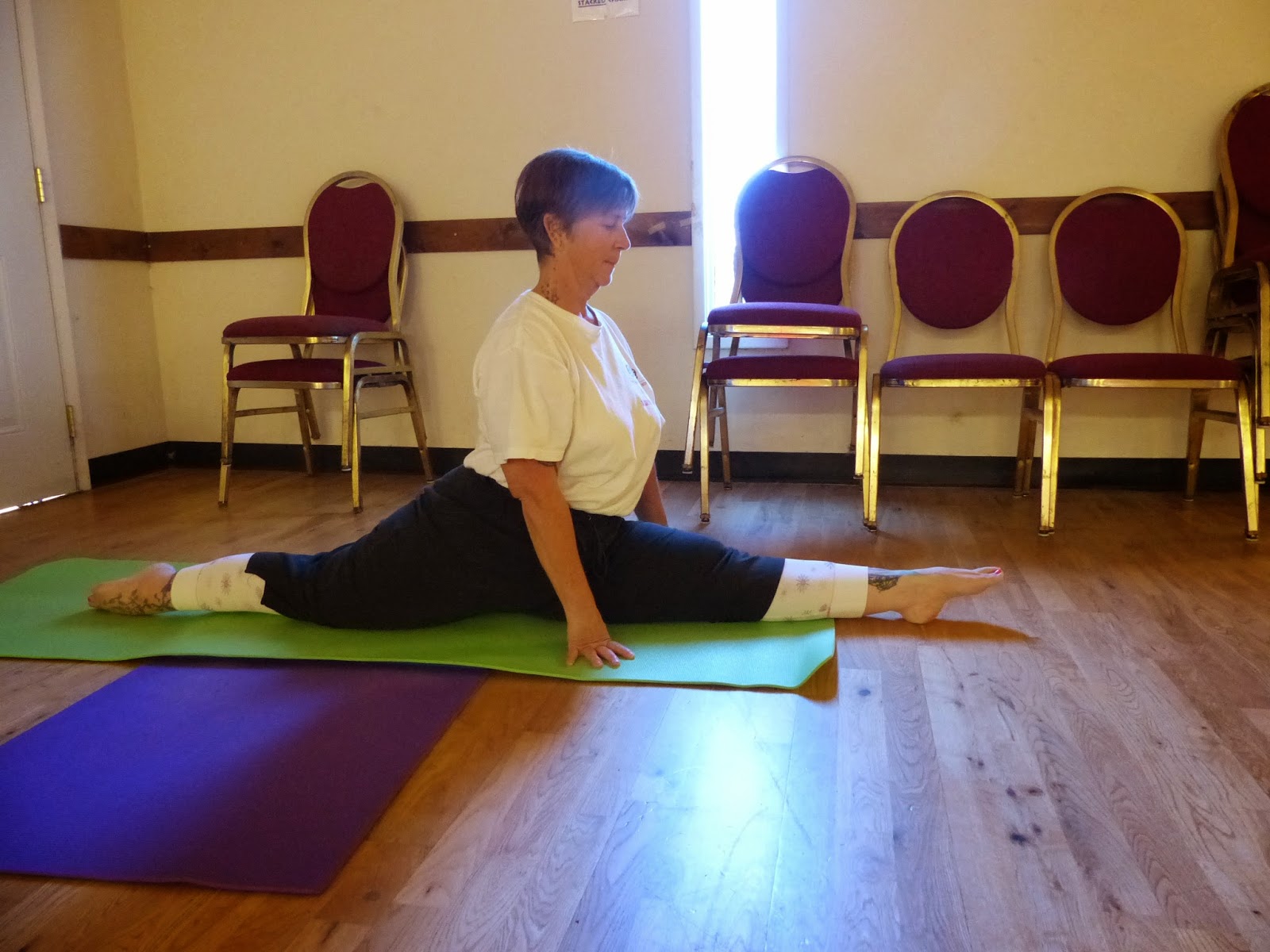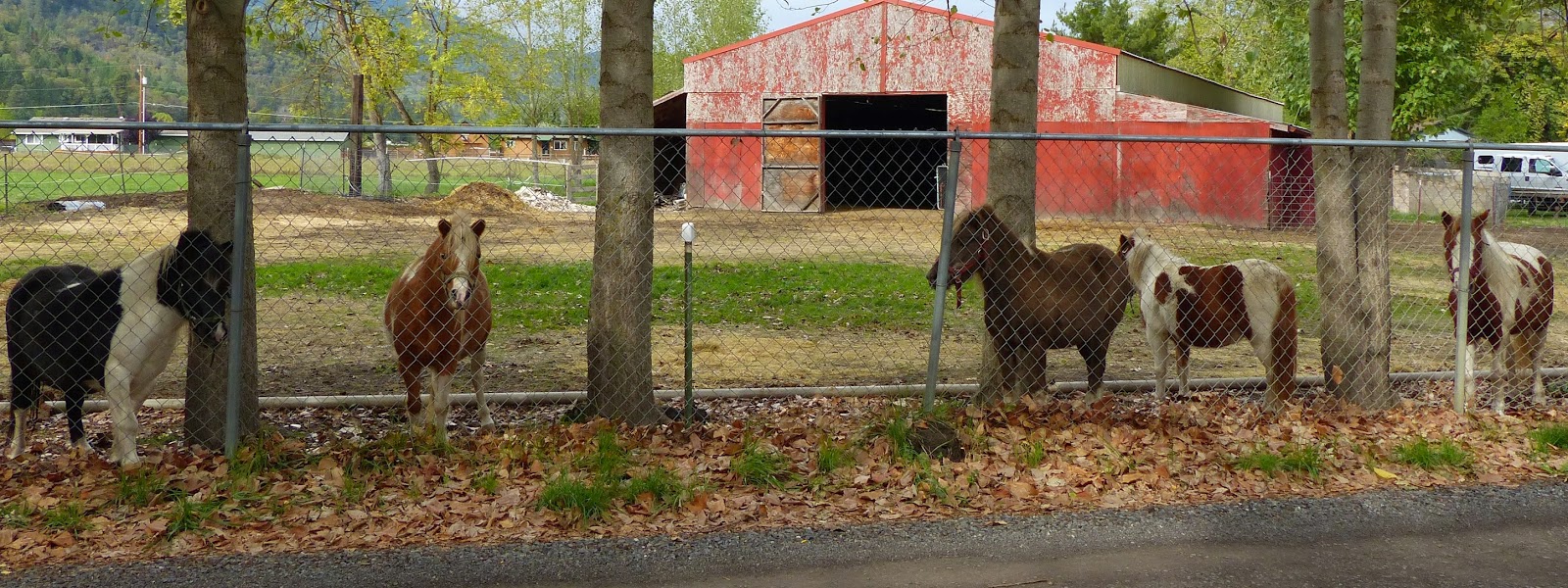 |
| Splits at 70? Not a big deal. Seriously. Not. Good party trick? Yes. |
I fell into the splits at the mere suggestion that I could. And yes, I am having the time of my life, even with the "older than dirt" birthday hat and the blazing candle sunglasses. And even in full-throttle exhibitionism. I should be ashamed, but I'm not.
The reason I can do the splits, touch my toes, do a push-up, hold a plank position for two minutes, put my socks and jeans on standing up, squat to pick weeds, flush airport toilets with my toe, lift heavy casseroles from the oven, etc. etc. is because I practice yoga. But my point is, I am nothing special!
I've been in a yoga class with many of the same people-of-my-approximate-age for nearly 15 years. I've seen them become stronger, more flexible and more balanced, the opposite of what might be expected as the years "just roll by like a broken down van" as Bonnie Raitt sang.
For now, here's how I see it. Yoga poses go from easy to challenging to seemingly impossible (as doing the splits appears to many people). The objective is to be able to hold poses, which may require significant strength, balance, and flexibility, and separate yourself from the discomfort to concentrate on ..... something else. I'm not there yet. But I am able to breathe and sink more deeply into poses. And it feels good and has made me stronger and more confident all around. The same has happened to people in this class of what could now be called Yoga for Seniors! Although the teacher would never call it that because really, it is yoga for all ages and conditions.
 |
| Here's Lori Armstrong, a mere 59, easily doing the splits. But then, she IS a former gymnast. |
 |
| Lyn, 69, is an accomplished yogi and the splits are no prob! |
Teacher Denise Elzea, who is about to turn 65, and former student Lucille Sava, 72, who moved away since this photo was taken, are both super flexible and strong.
|
| The "boat pose" challenges the abdominal and thigh muscles. |
| Lori doesn't have a tight muscle in her body. |
Kay, 70, can almost do the splits, plus, she has recovered from a frozen shoulder to be able to do this pose and make it look easy! (It isn't.)
|
Teacher Denise loves seeing her students progress. She says: The amazing thing is, most are stronger, more balanced and flexible than they were many years ago.
|
Denise has a lot to smile about. She started offering yoga classes in Rogue River about 15 years ago. I was there, and remember many classes with just a few students. Sometimes, just me! She hung in there and now has about 25 people who regularly show up, averaging about 15 per class. Perseverance and stamina are yoga objectives, and she has demonstrated both traits physically and mentally.
A You Tube video about a 94-year-old yoga teacher has been making the rounds, and Denise, 65, fully expects to be teaching in 30 years. She announced this to the class, and said, "I expect you all to be here with me." Jim, whose wife is in her early 70s, said, "I'll be here! Rita will bring me in my urn."
We all collapsed in laughter. That's part of yoga, too. Not taking yourself too seriously and never missing an opportunity to connect with humor.
 |
| Yoga for awesome seniors? Absolutely! Fifty or better? Get thee to a yoga class! Student Donn-Glenn Harris and yoga instructor Denise Elzea. |
Yoga opens me. Aging makes us tight, closed, drawing inward. Yoga expands the joints, the muscles, the heart and the mind. It gives us room to breathe and to be. Donn-Glenn Harris, 85.
Another post about aging avoidance: Is 90 the new 70? Ask Pauline.










































